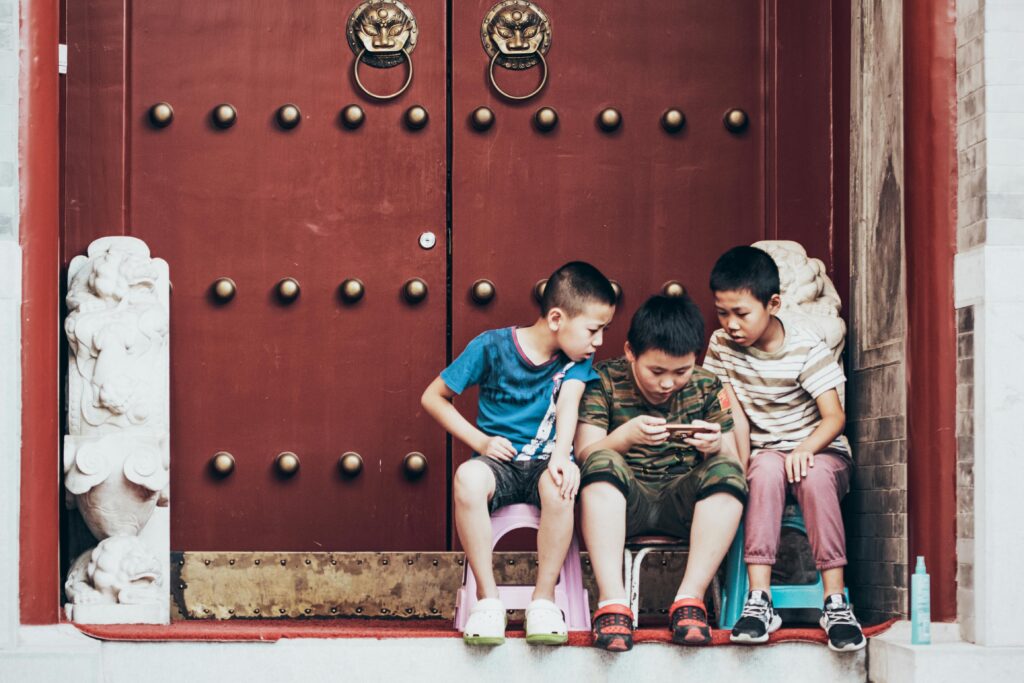10 Eastern Perspectives

As with any broad cultural category, “Eastern” is meaningful only to a point. Specific cultures are embedded in various countries, language groups, communities, religious groups and geographical regions. My attempt in looking at Eastern perspectives is to explore some broad themes that East Asian scholars have identified in early childhood to give examples that (as with Turtle Island) are not representative of the whole but are meaningful unto themselves. Because I have no lived experience in any culture other than my own, I respectfully defer to members of different cultures — in this case, Korean and Chinese — to explore some of the important themes related to children’s thinking and learning, including globalization.
Ahn (2023) explores themes of globalization in her ethnography of a Korean preschool that uses a Western pedagogical approach (e.g., Reggio Emilia) that conflicts with some of the subconscious cultural values of the teachers. Among the core differences between Western and Eastern values is the concept of selfhood (to be taken up in more detail in Chapter 7). Ahn (2023) reports that the teachers espouse Western values such as self-expression and individuality explicitly, but their reactions to children who embody such values in their learning are deemed as “cocky” (p. 116). Ahn (2015) explains that the Confucian cultural model in Korea values “group harmony, hierarchy, cooperation, and respect” (p. 224), which differs from the Western emphasis that is formally encoded in their chosen pedagogical approach.
Consistent with Ahn’s characterization of a core theoretical difference between Korean and Western models of thinking and learning, Jin Li (2012) offers insight into Confucian cultural values in Chinese culture. It is important to note that Confucianism is an ancient philosophy of societal structure and governance that predates Western child development theories by millennia. Therefore, any consideration of the underlying systems that govern and support early learning in countries like Korea and China must consider Confucianism as the guiding philosophy historically.
Indeed, Li (2012) characterizes Chinese models of thinking as having entirely different cultural values than those of the West, making those values explicit in Confucianism.
| East Asian “value-oriented” approach | Western “mind-oriented” approach |
|---|---|
|
|
These perspectives on learning lead to very different ways of providing environments and expectations for young children. In Ahn’s (2023) work within Korea, she identifies clashes when Western learning models are brought into a Korean context. This is to be expected given the vastly different theoretical landscape of thinking and learning. But it can also be insidious due to the current-day colonial impact of adopting pedagogies such as Reggio Emilia, which, according to Li (2012), is the perfect embodiment of all of the Western values described above. When such values are delivered indirectly through teaching methods, they are bound to create conflict. This is the sort of cultural clash we must be aware of in North America and in our diverse learning and care settings.
In an examination of the social and cultural contexts of Asian learning in the United States, Mistry and colleagues (2016) identified such challenges in the classroom. The authors emphasize that immigration to countries (in this case, the U.S.) and emigration from other countries (such as China and Korea) have highly specific sociopolitical contexts that shape the skills and emphases on thinking and learning. In some cases, social issues such as poverty or lack of education can contribute negatively to development.
Globalization in Asia (especially India, Korea, and Japan) has resulted in the importing of international products from Asian countries to the West, contributing to a hybridization of both cultures. Such cultural fusions are contributing to Asian-American self-conceptions. The authors also point to historical legacies of colonization throughout Asia and the harm this has caused in countries such as the Philippines, Thailand, and Korea.
All of these factors contribute to the developmental context of children’s thinking and learning from both countries of origin and countries of immigration. Similarly, oppression and social stratification (along the lines of economics and race, in particular) also have a tremendous impact on development. For example, the authors report on the “otherizing” of Asians and the racial microaggressions directed towards them in the U.S., regardless of whether they are immigrants or not (Bhatia, 2007); this undoubtedly has parallel implications for Asian Canadians as well.
When we consider theory, we consider not only cultural values but also complex histories, knowledges, experiences, and oftentimes, persecution. These factors heavily influence how we think about children’s thinking and learning here in Canada. Racism and the othering of non-Western cultures is something that needs to be made explicit before we can identify the complexities of the needs of culturally diverse learners in this country.
Reflection Journal
Reflection 2.4: Reflect on the scholarly contributions from Indigenous, Black, and Eastern communities presented in this textbook. Name one model, framework, or insight that you would consider a key takeaway for further research. Has this takeaway challenged your perception or biases about children’s thinking and learning? How might you integrate this takeaway into your professional practice?

